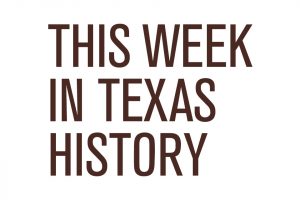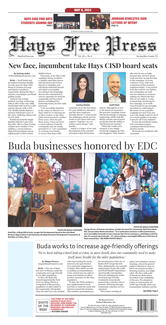L
t. William Whiting and his saddlesore cavalrymen were warmly welcomed to Fort Leaton on March 24, 1849 by the proprietor, who hoped to talk the army into making his private hideaway on the Rio Grande an official border outpost.
The shavetail’s mission was to find the shortest and safest route from San Antonio to the western tip of Texas along with the site for a fort to protect the passage. Swayed by his host’s hospitality, Whiting suggested Fort Leaton, a rash recommendation that was rejected by his superiors.
To the north in the Davis Mountains, a fort of the same name was eventually built. The scene of a close call he was lucky to survive, that particular locale did not rank high on Lt. Whiting’s list of possibilities.
Soon after leaving Fort Leaton, the small patrol wandered into a steep-sided valley and right into a trap sprung by 200 Apaches. Overpowered by the marauders, the 15 soldiers waited in terrified silence as their captors debated their fate long into the night. At sunrise the Apaches agreed the troopers were not worth killing and casually turned them loose.
In 1846, Ben Leaton had decided to settle down. For a gunrunner and all-around crook, this meant limiting the scope of his crimes rather than converting to the straight and narrow.
Scrounging scrap materials from the ruins of a Spanish garrison, he pieced together a trading post predictably named in his own honor. Financed by his new wife Juana, daughter of a well-to-do Mexican family, he opened for business.
Straddling the main artery from San Antonio into the Mexican interior, Fort Leaton was the only stopping place for the 500 desolate miles between El Paso and Eagle Pass. Confident a boom was in the making for his outlaw oasis, Leaton hustled to make ends meet.
More concerned with the pangs of hunger than those of a little used conscience, the comanchero enjoyed a brisk trade with the Indians roaming both sides of the border. For a price Leaton provided the entire line of illicit items from state-of-the-art weaponry to rotgut whiskey. He also obliged the raiders by relieving them of stolen mules and horses.
Leaton bought and sold human beings with the same cold detachment as contraband livestock. After purchasing the freedom of Indian captives, usually white women and children, he ransomed the pitiful creatures to distraught relatives.
The profitable arrangement with the red renegades did hit the occasional snag, however. Treating his best customers to a free feed, Leaton discovered the next morning that his guests had made off with everything on four hooves.
Some weeks later, the gullible culprits accepted an invitation to a second feast. The famished Indians had yet to take a single bite, when Leaton blasted them with a concealed cannon. Those Kiowas, Comanches and Apaches stubbornly clinging to life were methodically murdered and scalped. Leaton was not about to pass up the $200 bounty the governor of Chihuahua paid for each gruesome trophy.
Leaton formed a sinister cartel with John Burgess, Larkin Landrum and Ed Hall to control the Big Bend badlands. But honor was in short supply among those thieves, and a violent falling-out was inevitable.
Sitting down to a meal with his family, Leaton was shot to death by the envious Burgess. But the assassin’s ambitions were thwarted by Hall, who filled the vacancy at the head of the table and became the new master of the fort.
Burgess was a stubborn sort and not about to be denied. During the economic slump caused by the Civil War, Hall ran short of cash and borrowed from his rival. Worst of all, he put up Fort Leaton as collateral. When the loan became delinquent, a moonlight collector took Hall’s life as payment.
A widow for the second time, Juana Leaton Hall scooped up her children and fled across the river. Burgess and his cronies took over the abandoned fort lock, stock and barrel.
Bill Leaton and a younger brother grew up haunted by the vision of two fathers murdered by the same villain. Legend credited the youths with the systematic slaying of nine Burgess henchmen before the killer got his just reward in December 1875.
Bill Leaton caught up with John Burgess in a Fort Davis saloon. Not a word was said before he gunned down the trembling target.
His vengeance complete, Leaton ran for the Rio Grande. He came close but not close enough. On the Texas side of the river, an accidental run-in with two soldiers erupted into gunfire and Leaton was fatally wounded.
Like most Lone Star feuds, peace came only when there was no one left to fight. As for old Fort Leaton, the desert renewed its option and repossessed the empty outpost.
Read all about Mexia, Roaring Ranger, Desdemona and Bloody Borger in “Texas Boomtowns: A History of Blood and Oil.” Order your autographed copy with a check for $28.80 to Bartee Haile, P.O. Box 152, Friendswood, TX 77549 or on-line at barteehaile.com.






